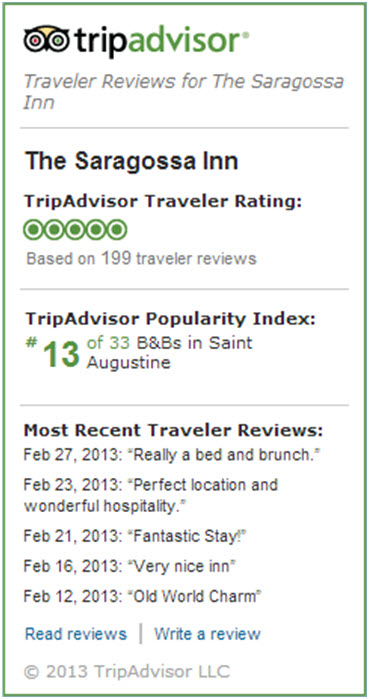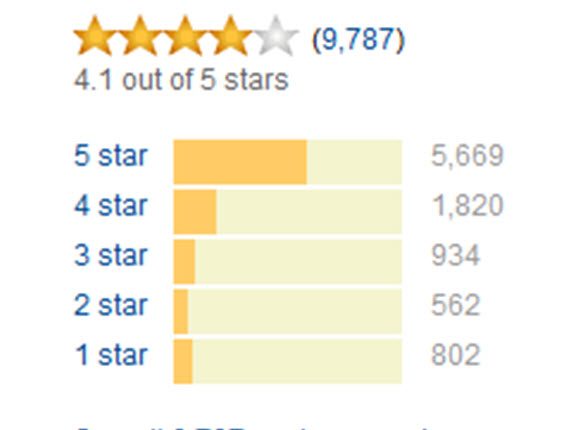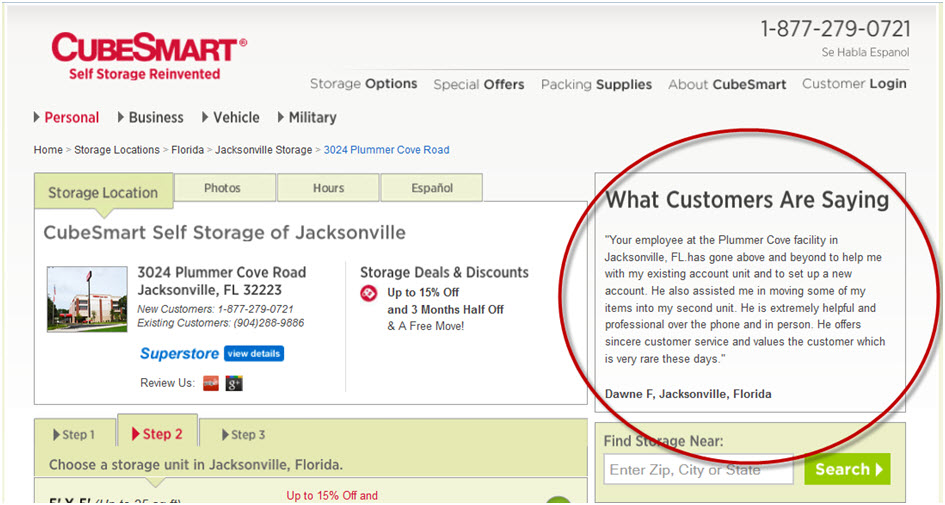Testimonials and reviews can be powerful tools on your website or landing pages. As external factors, they have the ability to relieve customer anxiety on almost any issue. From concerns on product quality to cost justification to usability, testimonials can be used to alleviate very specific areas of anxiety.
That’s why they can be a great element to test on our website. Testing testimonials came up at a recent Peer Review Session while MECLABS research analysts discussed testing ideas for a Research Partner’s website. Today’s blog will share six test ideas that can increase the force testimonials have on your website.
Test #1: Location on page
According to the MECLABS Landing Page Optimization Online Course, proximity is the degree to which your corrective measures – testimonials in this case – are placed so they are experienced at the same time as, or as soon after as possible, the moment the anxiety is stimulated.
Testing different locations on your pages, at different points of anxiety along the path to purchase, could help optimize the value of your testimonials and improve conversions.
It’s important to remember best practices don’t always apply. That is why testing is so vital. While you might think a testimonial on cost justification would work best next to the “Purchase” or “Add to Cart” button, another location on the page might have a stronger impact or perhaps your customers have already decided the price is acceptable before that point and the testimonial is wasted there. A cost justification testimonial could relieve more anxiety placed next to the location where the price is initially mentioned on the page.
According to the MarketingExperiments Blog post, “Landing Page Design: Eye-path vs. Thought sequence,” testimonials can increase conversion “when used in close proximity to the value on the page.” The value exchange could be a form asking only for an email, a form asking for many fields for a price estimate, or simply an “Add to Cart” button.
Here are a couple of ideas for testing the location of your testimonials:
- Product page – Does a testimonial next to a bullet list of product benefits, providing real-life evidence of your product’s benefits, earn your company more conversions than a testimonial justifying cost close to the “Add to Cart” button?
- Sidebar – Even if previous testing has proven the sidebar is an effective location for testimonials on your site, it could be worth a test to see if moving the testimonials up or down the side bar improves conversion further. You should follow the thought sequence of your customers. So, in their mind, does seeing a customer review about the quality of service above, say, a security seal alleviate more anxiety?
Test #2: Long vs. short testimonials
Some testimonials are quick and to the point – others fill a page with every detail possible. While some audiences might only require a short testimonial to alleviate any worry, other purchasers may require more in-depth information.
A few factors could play into which might be better for your company and products: audience, product complexity and cost. If the product is on the less expensive side and is pretty straightforward, your audience may need only a simple, “[Your product] did everything I expected and more” type of testimonial. However, a CEO purchasing complex computer software might need more details to satisfy any concerns, even going as far as a full case study.
Try testing different lengths of testimonials on your website. You could potentially find customers at different points in the path to purchase need more or less detailed testimonials.
 Test #3: Adding a rating scale
Test #3: Adding a rating scale
While testimonials can help relieve anxiety, the qualitative format can leave some prospective customers unsure of the reviewer’s final verdict on the product or service. A rating scale allows prospects to immediately recognize the overall opinion of pervious purchasers. They also allow for quick scanning, so those just browsing or in a time-crunch can instantly take those overall ratings into account.
Most likely, you wouldn’t be able to instantly do this test. You’ll first need to adjust the way you ask for reviews or testimonials so that a rating will be required.
Test #4: Geo-target testimonials
When potential customers look at testimonials or reviews, it can help them better relate to the experience if they feel connected to the reviewer. One basic way to do this is by geo-targeting your testimonials. You can do this in a variety of ways, including asking for a ZIP code, city, state or country, and determining the location based on the visitor’s IP, WiFi or GPS data.
For example, if I am looking at the website of a national home builder, seeing a testimonial from my hometown of Jacksonville, Fla., will have a much higher effect on me than one from Kansas. Knowing someone close by has had a great experience, with possibly the exact same people who will be working on my new home, will instill more confidence in my decision to go with that home builder.
Remember, you don’t have to rely on your analytics to do all of the work. You can also ask the customer to self-segment themselves as they go through the buy process, which will allow you to present them with the location-targeted testimonials. CubeSmart, a self-storage company, employs a similar strategy. Once you select a location, you see a testimonial from a customer who uses that same location. You get to see the experiences of people just like you with the same people you’ll be interacting with if you purchase.
While it’s not fool proof – after all, you could use my IP address when I’m researching home builders while on vacation out of state – it can certainly help establish a bond between prospects and current customers, as well as create more perceived value in that testimonial.
Test #5: Images
While a picture might be worth a thousand words, you must ensure they are they right words. If you have pictures of your current customers next to their testimonials, does the picture send the right message?
If you are going to use a photo, it must communicate value. “An image is only as valuable as the value it communicates,” according to Austin McCraw, Senior Editorial Analyst, MECLABS, in the MarketingExperiments blog post, “This Just Tested: Stock images or real people?”
Let’s go back to our home builder as example. A test might involve a headshot of the new homeowners vs. a picture of the homeowners in front of their new home vs. a picture of just the home vs. no picture.
But don’t forget – For test validity, a four-treatment test might require more traffic than you have, so you might start with the first two and conduct follow-up tests for the remaining treatments.
 Test #6: Source of testimonials
Test #6: Source of testimonials
The last test you might consider is the source of your website’s testimonials. Potential customers could trust third-party testimonials or reviews more than ones provided by you. You want your testimonials to have as much force as possible in their value, and presenting visitors with unbiased testimonials could be a key tactic in doing that.
Not every industry will have third-party sites to turn to for this test. However, the restaurant and hotel industries have many sites they can utilize. The Saragossa Inn in St. Augustine, Fla., provides TripAdvisor information for its website’s visitors. Visitors can see the overall rating, the B&B’s popularity, as well as the bed and breakfast’s popularity index in the city and snippets of recent reviews.
Build customer theory
The success of all of these tests doesn’t depend on lifts. These types of tests can provide you with real insight into your audience, which can allow you to build, or deepen, your customer theory. The more you know about your customers, the better you can market and serve them.
Going back to a previous example, say you run a test between a testimonial located next to a bullet list of product benefits, providing real-life evidence of your product’s benefits, and a testimonial justifying cost close to the “Add to Cart” button. After looking at your analytics, you see some inconsistencies, where Treatment A (benefits testimonial) consistently wins every day, with the exceptions of Tuesdays, where Treatment B (cost testimonial) spikes in its number of conversions to overtake Treatment A for that day.
Because you are over-measuring your tests, you are able to look beyond the surface and look deep into the data you’ve collected. After doing a little digging, you discover the additional conversions are from traffic your weekly marketing email sends to the website. So while Treatment A works best for most channels, your email channel seems to better respond to Treatment B. This is just one example of how testing testimonials and review on your site can allow you to deepen your customer theory.
Related Resources:
User-Generated Content: Organic search up 10%, conversion up 125% with rich product reviews
Credibility: 9 elements that help make your marketing claims more believable
E-commerce: Using multivariate testing to increase sales 83.79%
Inbound Marketing: 5 tips for cultivating user generated content





Hi
Nice piece. This is an area much mentioned in passing and little written about.
I did some interesting A\B testing on my site and found i got significantly better results with video testimonials versus written and found the former considerably outperformed the former. I suspect it is because people find them more believable because they can see someone speaking.
Richard
I agree. I think people can easily discern an actor versus someone who genuinely used the product when watching a video (unless you’ve hire a troop of actors, but still I think people are much smarter now then we give them credit for).
Where as text gives the visitor no ability to interpret whether this was craftily written by a copywriter or if it’s an actual statement.
Testimonials really increases conversions, it is definately a must have when doing product reviews. When I started to include testimonials into my product reviews I found that conversions often doubled! So definately important, thanks for good tips.
Interesting post and certainly some food for thought on the customer perspective. I have only recently started including testimonials and I wouldn’t of thought about the added value of Geo Targeting – great tips.
Thanks Selena 🙂
Thanks a lot for this eye opening article. Being in the business of CRO(Conversion Rate Optimization), I am very curious about testimonials and their impact on conversion rate.
I’d like to add my view on some of the things in your article.
“#1 Location of testimonial:”
Product page and sidebars are most popular places to display testimonials. Website visitors are used to seeing testimonials there. However, as an alternative, you can consider adding a ‘sticky testimonial tab’ to your website(as in http://www.wiwitness.com). Two main advantages of this approach compared to the traditional ‘in-lined’ testimonials are:
a. Real estate: Sticky testimonial tabs occupy very little real estate space on your web page because they stick to the edge of your page. You don’t have to worry about making space for testimonials by re-arranging other website components. This is very useful if you are adding testimonials to an existing web site. You can retain your old layout if you use ‘sticky testimonial tabs.
b. It’s always visible. Prospects can click on it anytime to see testimonials.
“Test #2: Long vs. short testimonials”
Ideally, the length of the testimonials should depend on the sophistication of the product or service being offered. But we can’t predict individual’s preference for reading testimonials. Some prospects may feel short testimonials are just “not enough” while it may work just fine for some others.
Similarly, while detail-seeking prospects find long testimonials interesting, others may not read it fully because it’s too long for them.
There’s another critical aspect to consider while deciding short v/s long testimonials. The look and feel of testimonial presentation. Especially, if you are handing testimonial display yourself, presenting a very long testimonial text in the limited real estate of your home page or product page can get really tricky.
Alternative:
Instead of going for a A/B test of short/long testimonials, consider shortening long testimonials with a “read more” link. Clicking on that link can expand the current view to reveal the whole testimonial or take the user to a new page. Optionally, you can track how many people clicked on the “read more” button. This is a good measure of how interesting is the first few lines of that particular testimonial.
As an example, take a look at the testimonials on http://www.c-program-example.com. Only the “short” versions of the testimonials are displayed by default. Only those interested in reading the “full” version will click on the “..more” link.
“#4 Geo target:”
I completely agree with this. I have felt it myself while looking for local services online. Do you have any suggestions for a tool to achieve this?
“#5 Images & 6# Source of testimonials”
Images and source of testimonials are the most important components. These will decide whether your prospects TRUST the testimonials.
Even the best placed testimonial with ideal length is useless if the prospect suspects it. Adding an image and a source goes a long way in increasing prospect’s trust. Don’t just add image and link without permission. For best results make your testimonials verifiable(http://blog.wiwitness.com/2013/07/verifiable-testimonial.html).
I will be happy to see more constructive discussion on effectiveness of testimonials.
I can be reached on twitter @snadahalli
Cheers,
SN
Selena,
very nicely written article. covers all the key things. the only thing i would like to add is that testimonials is not a one-time thing but an ongoing activity. i have seen most websites have dated or very less testimonials. i am sure it is not true that they have stopped getting more customers ? or seldom have happy customers ? (hope not). as visitors/prospects we all like to be assured that a large % of customers have been happy. (check out this blog for related topics http://customertestimonials.wordpress.com/2013/12/10/why-customer-testimonials)
@Richard Masters
I have found the same thing with my testing. Video is the way to go.
True. Testimonials or reviews really increases conversions. If you’re going with local SEO or Ecommerce, you know the real importance of online reviews
Hello, I have browsed most of your posts. This post is probably where I got the most useful information for my research. Thanks for posting, we can see more on this. Are you aware of any other websites on this subject.